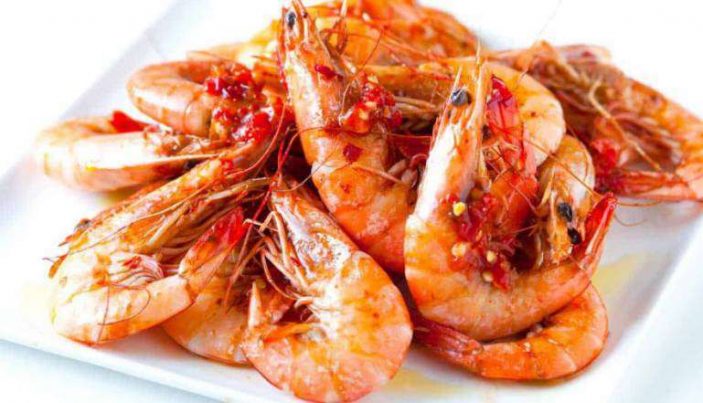Shrimps are part of the shellfish and a popular seafood delicacy in many parts of the world.
Shellfish are grouped into either mollusk such as oysters, octopus, squid, scallops, mussels or crustaceans which include crabs, lobsters, prawns, krill, woodlice, crayfish, barnacles, and shrimps.
In terms of their appearance, shrimps, have long antennae and elongated narrow muscular abdomens and are mostly marine. However, about a quarter of their species are freshwaters.
Nutritional profile
They are low in calories, have proteins, essential fatty acids including omega-3 fatty acids (EPA and DHA), phosphorus, zinc, magnesium, iodine, iron, choline, copper, vitamin E, and vitamin B3 (niacin), B5, B6, B12, and other vitamins and minerals.

They also have astaxanthin and carotenoid antioxidant. However, they are higher in cholesterol when compared to other seafood.
Can cats eat shrimps?
Yes. Cats can eat shrimps. They are safe for your kitties and from their nutritional profile, it is obvious they are quite nutritious. Just like fish, most cats will like their taste and flavor.
Despite being nutritive, they should only be a part of your feline diet and not replace their usual diets because they lack some nutrients needed by kitties.
Besides being high in cholesterol, most of the shellfish are high in sodium. Excessive amounts may give more sodium that these pets than required. Therefore, give them occasionally in small amounts or as a treat.
However, if your cat’s love them so much, Purina Fancy Feast Adult Canned Wet Cat Food Flaked Fish and Shrimp and Fussie Cat Premium Tuna Formula will be a great alternative.
Cat foods with shrimp
Besides the two brands, if you need more nutritionally balanced diet this crustacean, consider going for the following commercial cat diets:
- WholeHearted All Life Stages Canned Cat Food – Grain Free Recipe Flaked in Gravy Tuna and shrimp
- Gourmet Soup Cat Food Tuna & Shrimp
Should I give them cooked or raw shrimp?
In some cultures, this shellfish is eaten raw including Japanese (in fresh sashimi) and Chinese (where it is eaten live after being soaked in baijiu liquor). However, this does not mean it does not harbor some bacteria, viruses, or parasites.
We do not recommend for any raw seafood including fish such as tuna, salmon, mackerel, tilapia, sardines and so on because they may be harboring germs, or they may be having parasites.
Therefore, remove its vein (digestive tract) before cooking it. Thorough cooking will kill all the parasites and disease harboring germs. The shells, head, and tail are ok.
Cook them plain, i.e., avoid adding any fat, oil or seasoning or any other flavorings. A medium-sized single shrimp is enough for a cat weighing 12-15 pounds and for those weighing 5-10 pounds, give them half.
Remember, all treats should not be more than 10% of your cat’s daily food requirement.
If you are considering prepacked or canned shrimp that are ready to eat, check for any other ingredients. Most of them have other additives making them not good for kitties.
Therefore, ensure there are no preservatives, salt, or additives such as onions or garlic, and so on before giving it to your feline friend.
Can I give shrimp to my kittens?
If you have fully weaned kittens, giving them as a snack is ok. However, since they are growing, they need special diets that are high in proteins as well as other nutrients.
Possible risks
Unlike tuna and a few other types of fish, these crustaceans have a lower risk of mercury contamination making them quite safe for your consumption as well as for your pets.
However, due to their high demand, they are often farm-raised where antibiotics may be used to reduce their susceptibility to diseases. FDA does not allow any shrimp that have antibiotics.
Since they are high in iodine, you may need to avoid them if your feline is on low iodine diets especially those with hyperthyroidism.
Finally, some kitties may be allergic to this crustacean or any other seafood. Therefore, stop giving them if you notice symptoms such as vomiting, diarrhea, fluctuance, itchiness among other signs of allergies.
